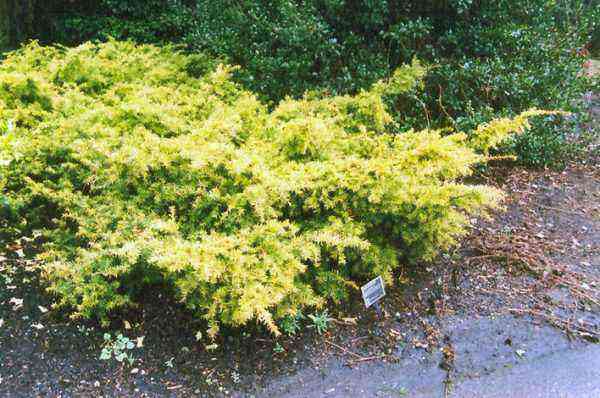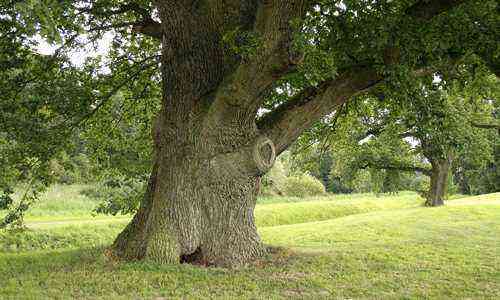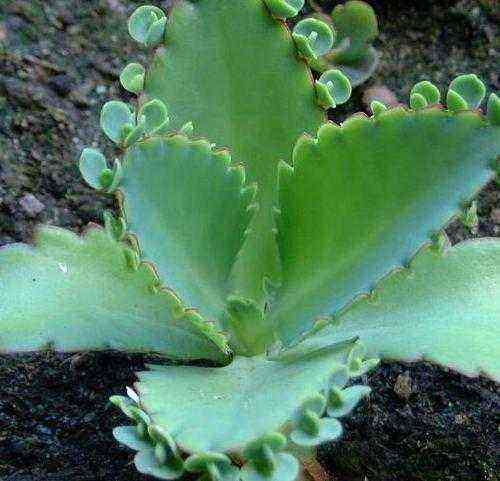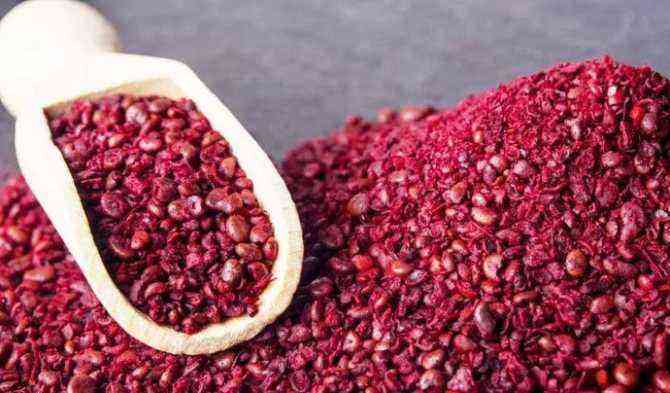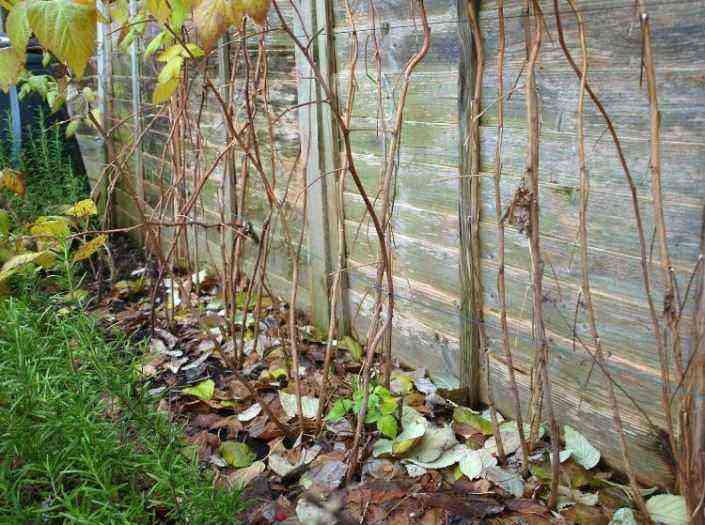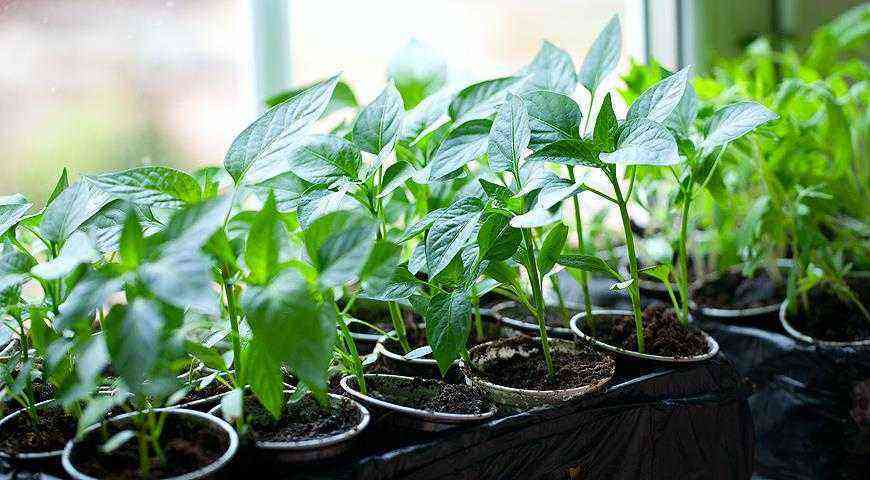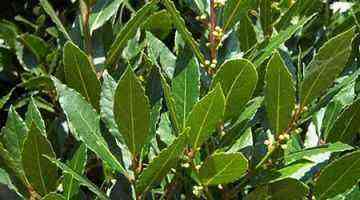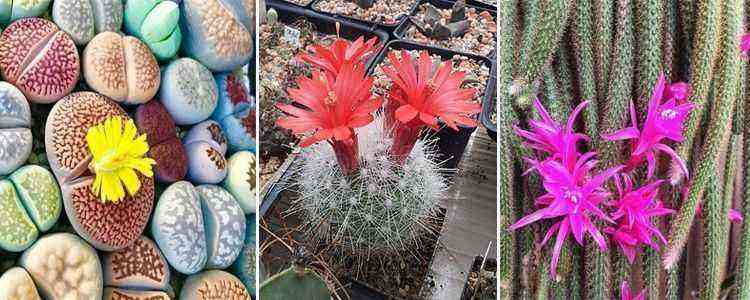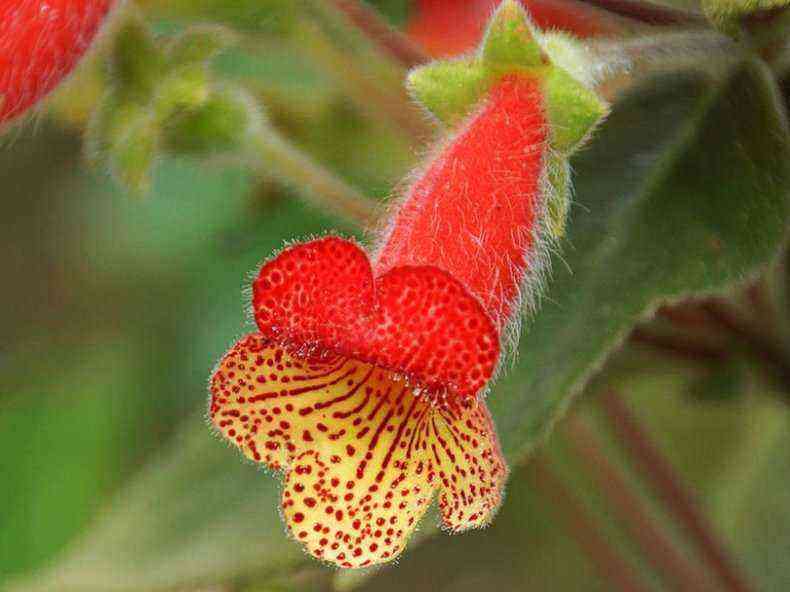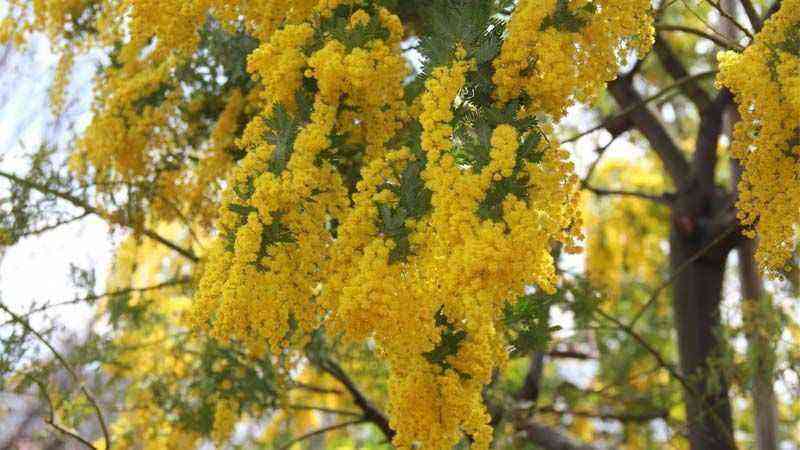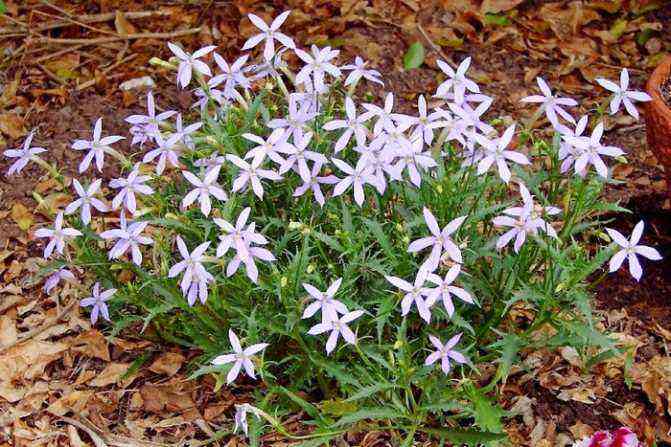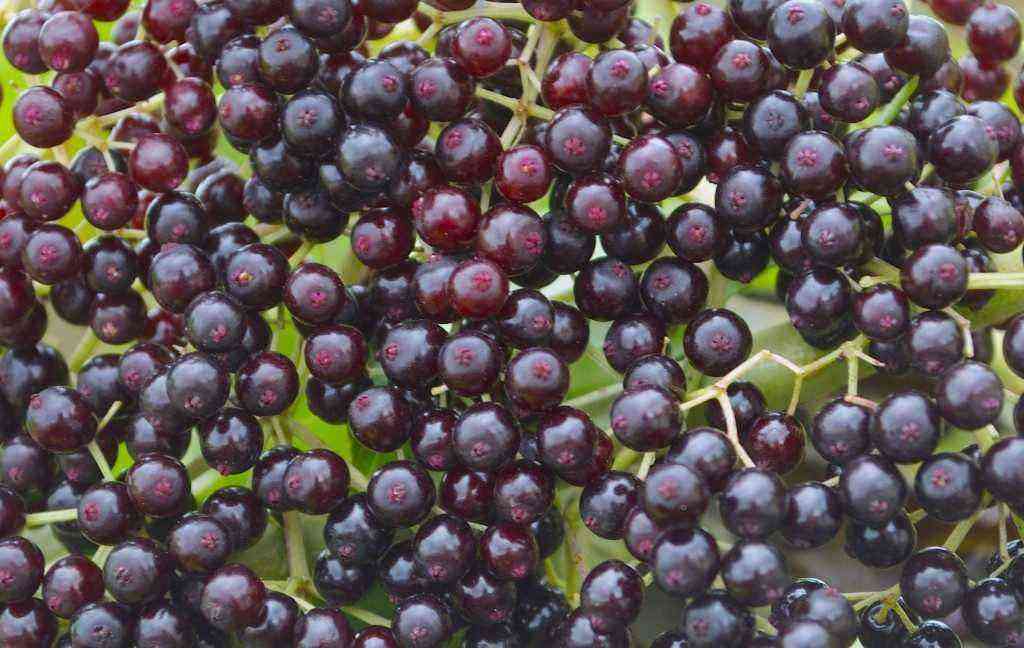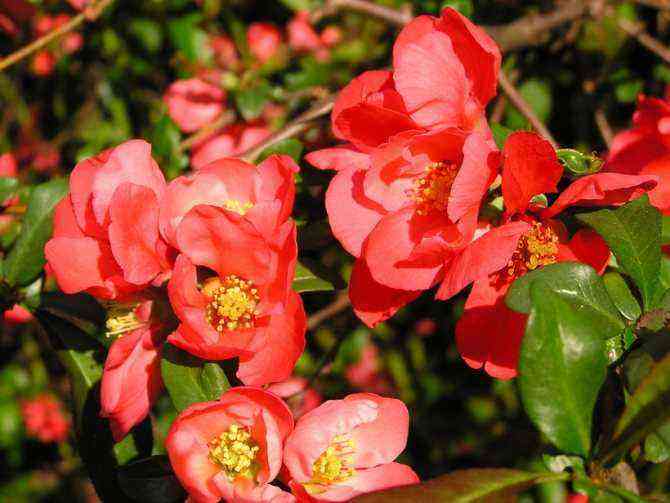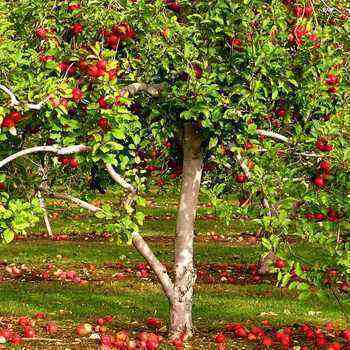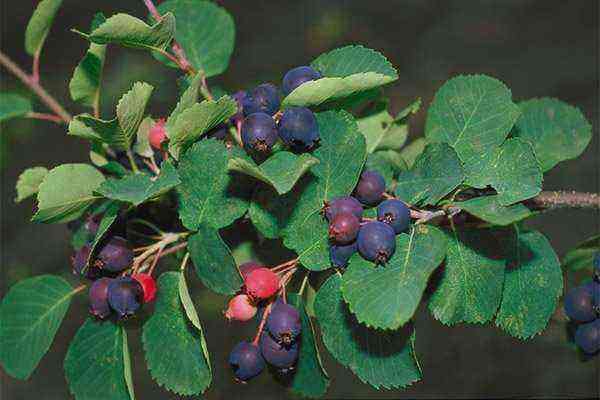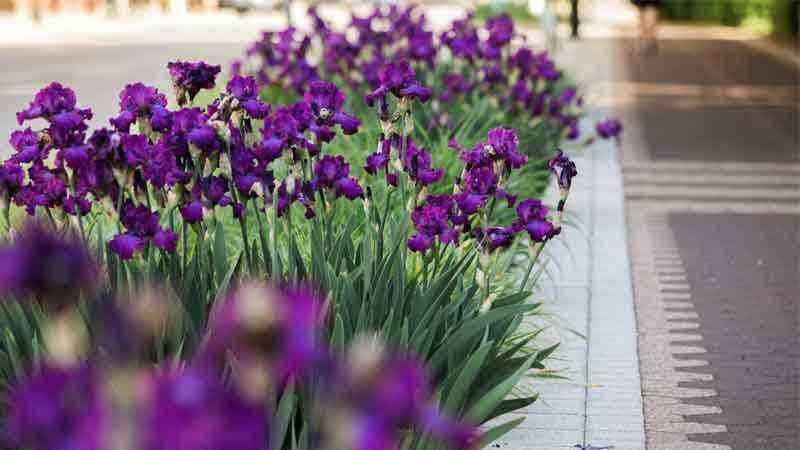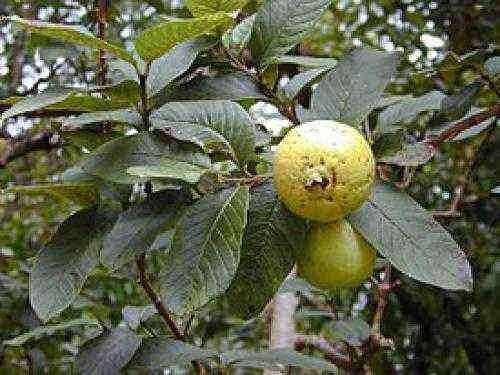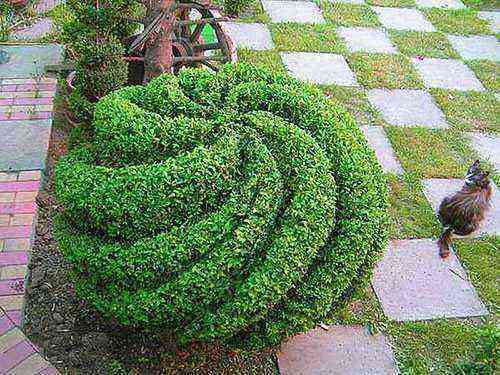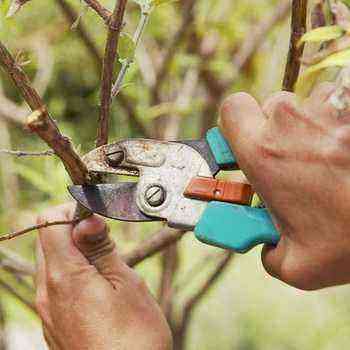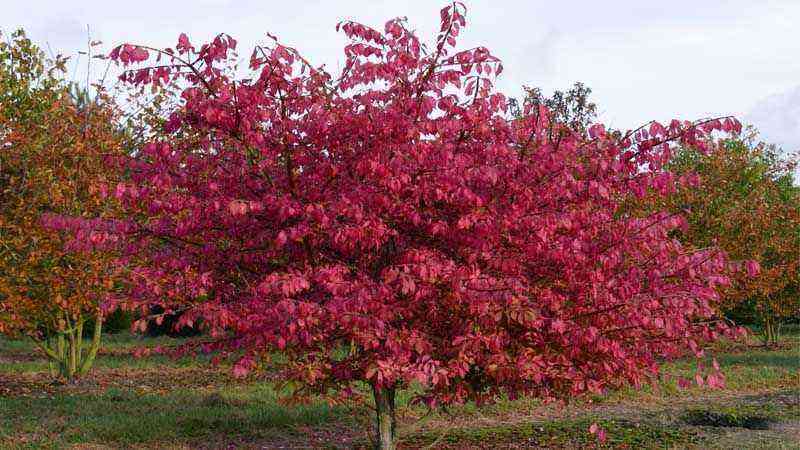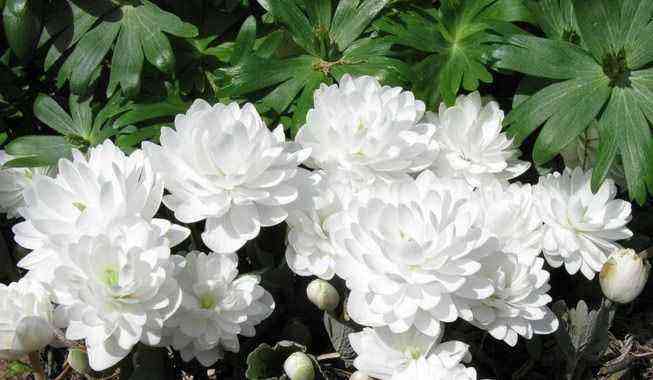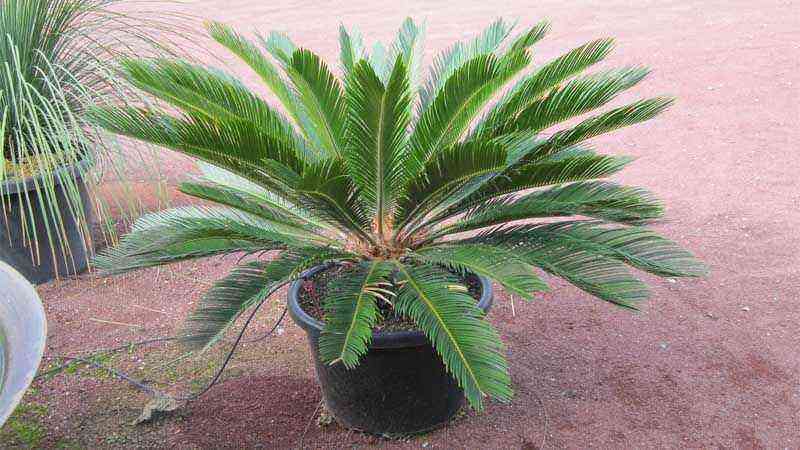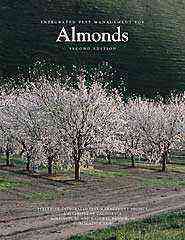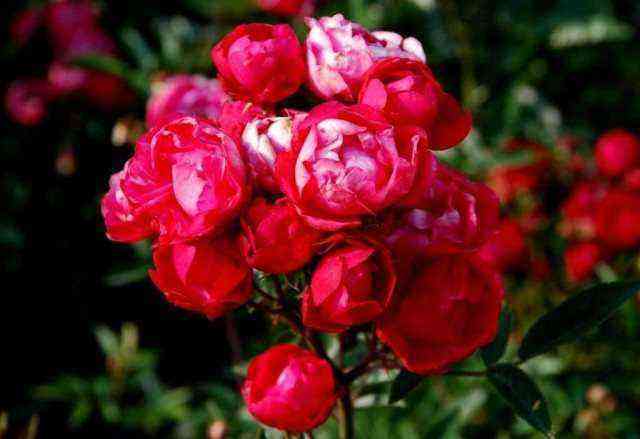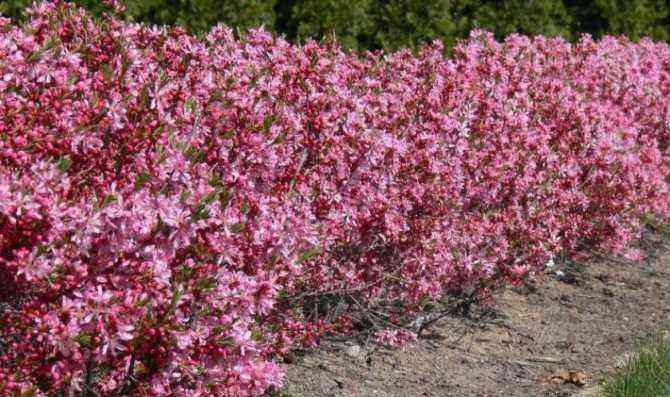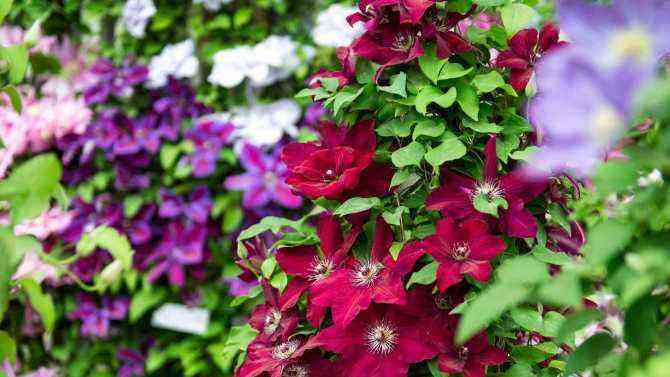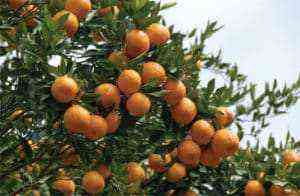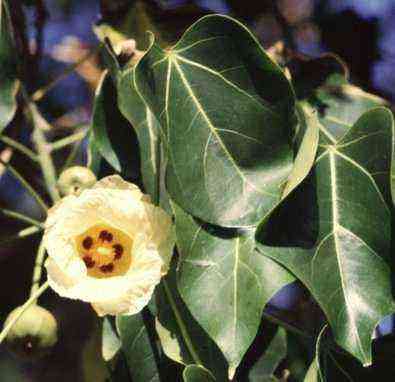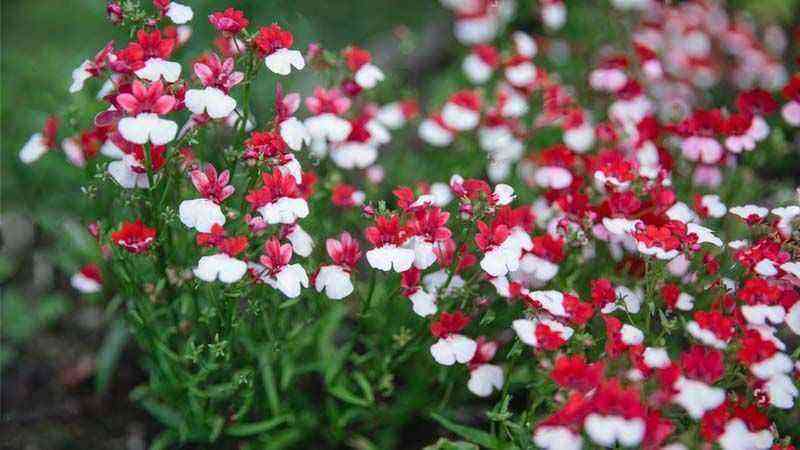The succulent plant Crassula, also called the bastard, is part of the Crassula family. According to information taken from various sources, this genus unites from 300 to 500 different species. More than 200 species are found in South Africa, and a large number of species can be found in Madagascar and tropical Africa. Some of the species can be found in the southern part of the Arabian Peninsula; such a plant is widespread mainly in the Southern Hemisphere. Its name is derived from the word “crassus”, which translates as “thick”, this is due to the fact that most types of foliage has a fleshy structure. At home, the most often grown species of Crassula purslane, it is also called the “tree of happiness” or “money tree”. However, many other types of Crassula are grown in indoor conditions.
Botanical description of Crassula
All representatives belonging to the Tolstyanka genus are very diverse in external characteristics. A significant number of species are indoor perennials with monocarpic shoots of different heights. The foliage is opposite, in some species collected in a kind of basal rosette, simple, entire, often ciliated. Leaves at the base are loose or accrete type.
The flowers are small, white, whitish, yellowish, red or bluish in color, collected in terminal or lateral, paniculate-umbellate or racemose inflorescences. There are varieties with single axillary flowers. It is very easy to take care of the plant and propagate the Fatty Woman.
Description and area
The main area of the plant is the countries of South Africa. Today, about 350 species of Crassula have been studied and described. Among them are tall, powerful trees, and shrub varieties, and creeping varieties.
Our heroine – shrub with branched stems and many fleshy, rounded leaves… The main color of the foliage is bright green, but there are varieties with a silvery color, and with leaves bordered with a yellow or red tone.
With age, the stalks of the bastard become lignified. This circumstance attracts bonsai lovers to the plant. A little patience, the right development of the plant, and it turns into a real “money tree” and a masterpiece of Japanese gardening.
Посмотреть эту публикацию в Instagram
Publication of Succulents flower meadow (@ cveto4na_polanka) Oct 25, 2020 3:45 am PDT
Popular types, varieties and hybrids of the fat woman
The genus Fatty includes more than two hundred species, many of which are very popular in home floriculture. For the outward similarity of leaves with coins, plants of this genus are often called “money tree”. In addition to the popular marginalis, there are many decent, highly decorative and relatively unpretentious varieties, forms and cultivars.
Crassula perforated (perforated)
C.perforate is a low-growing variety with diamond-shaped leaves arranged in pairs. The stem is slightly branched and rigid. The color of the foliage is light green, with a characteristic bluish bloom. A reddish border is present at the edges of the leaves. The height of the above-ground part does not exceed a quarter of a meter. Variegated forms have yellowish stripes on the foliage.
Crassula lymphoid (mossy)
C. lysorodioids, or C. mussoza, is a compact plant with an aerial part of a shrub type, no more than a quarter of a meter high, with fleshy, tetrahedral, creeping shoots and a slightly rising apical part. The leaves are small, scaly, tiled-folded in several rows.
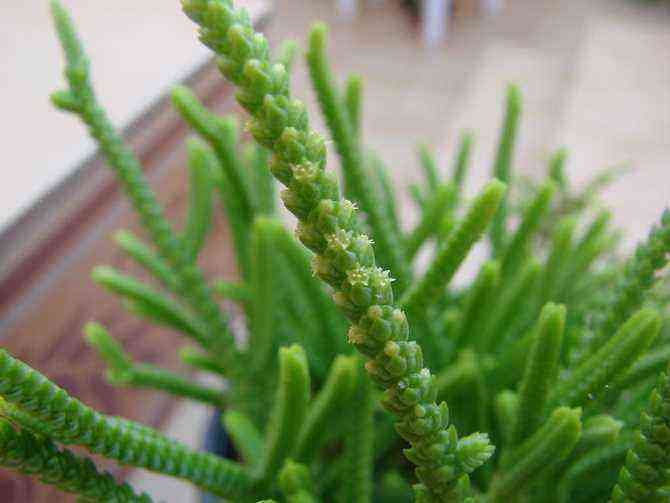

Crassula tree
C. arboresens is a relatively large variety with an almost rounded foliage of a very characteristic bluish color with a red border. The height of the aboveground part of the indoor tree can be one and a half meters. The variety is one of the most decorative, but it is demanding to care for and needs good natural light.
Photos
Crassula milk (lactea)
C. lactea Ait. – shrub and semi-shrub plant, with the height of the above-ground part a little more than half a meter. Shoots of a creeping type, with thick, obovate, fused at the base, bare leaves. The leaf plate is green in color, with the presence of whitish dots at the edge. Paniculate inflorescences, represented by numerous white flowers.

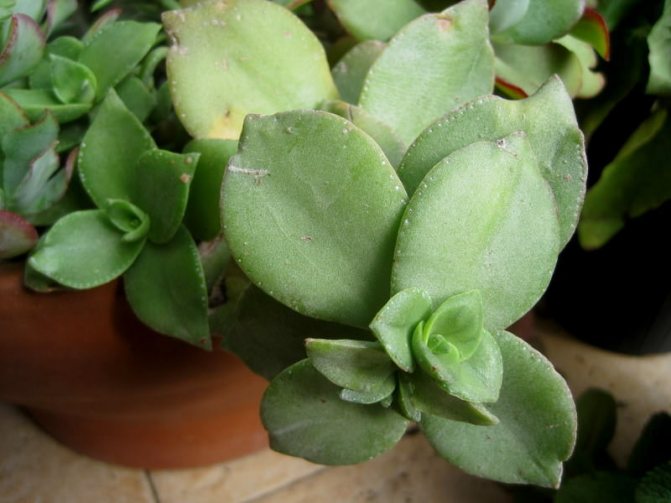
Crassula purslane
C. rtulacea is an unusual variety with aerial roots that form on the stem and branches. Flowering is extremely rare, paniculate inflorescences, represented by small, whitish or pinkish flowers.
Crassula oval (ovata gollum)
Соvata is a bushy plant with a height of the aboveground part of no more than a meter and strongly branching woody stems. The foliage is oval, fleshy, with a green upper leaf plate and a reddish tint on the lower part.
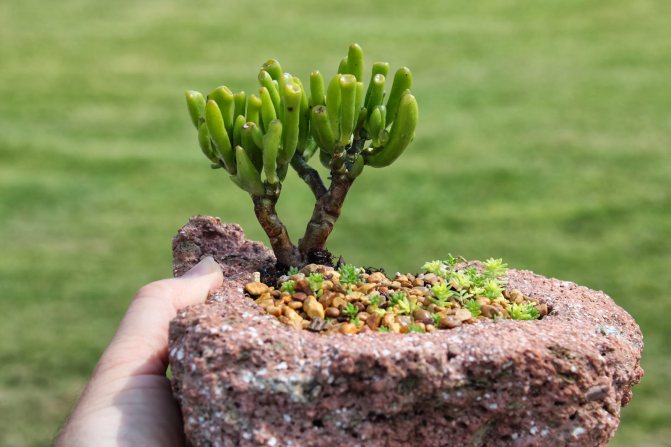
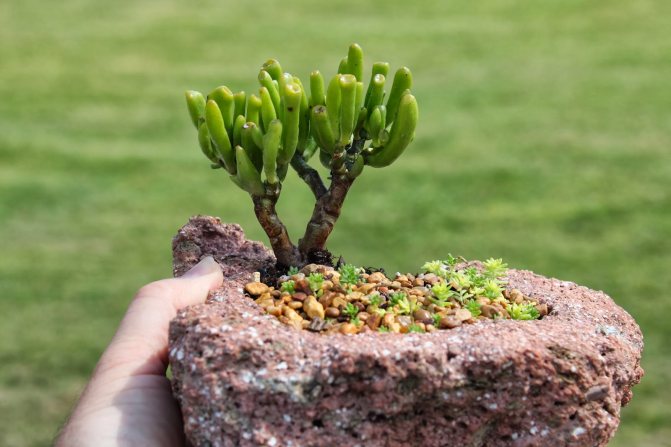
Crassula Sunset
С.оvata cv. Hummel’s Sunset is a popular cultivar with foliage decorated with stripes of white or yellow. The leaves have a pronounced red border.
Crassula The Hobbit
S. Nobbit – hybrid form, received by American breeders almost half a century ago. It is characterized by the original shape of the foliage, which is turned outward and grows together from the base to the very middle. A highly decorative plant, it is very suitable for creating bonsai.
Crassula Minor
C. ovate Minor is a compact variety with reddish, very attractive foliage. The species is slow-growing, therefore it is ideal for decorating mini-gardens.
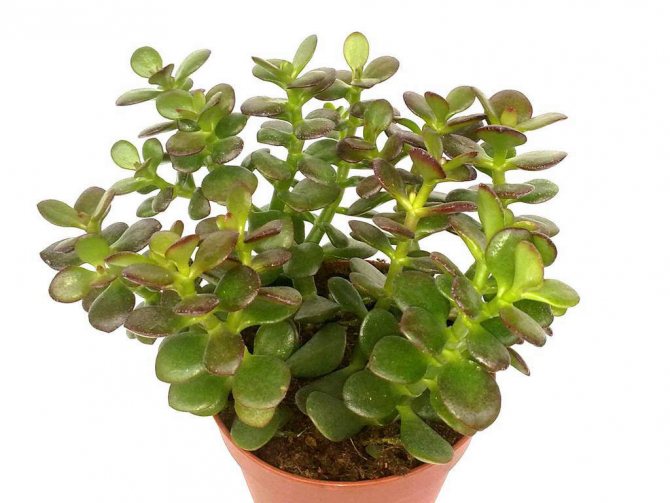

Crassula point
S. risturata – highly decorative variety, having lodging, abundantly branching shoots and foliage with an original appearance. On the general green background of the leaf plate, there is a huge number of red or purple-red dots, and the marginal part is decorated with thin and transparent cilia.
Crassula Buddha Temple
S. Wooddha’s TEMPLE – aerial shoots of the cultivar is represented by the so-called column of tightly pressed, as if strung on the stem bases of the leaves of a triangular shape and dark green coloration. The height of the aboveground part does not exceed 10-15 cm. Flowering is represented by apical inflorescences collected from red flowers.
Crassula mix
This group includes several hybrid forms and cultivars., which have an original appearance and are undemanding to care for. Most often, the group is represented by the popular highly decorative varieties “Minor”, “Hobbit” and “Obliqua”.
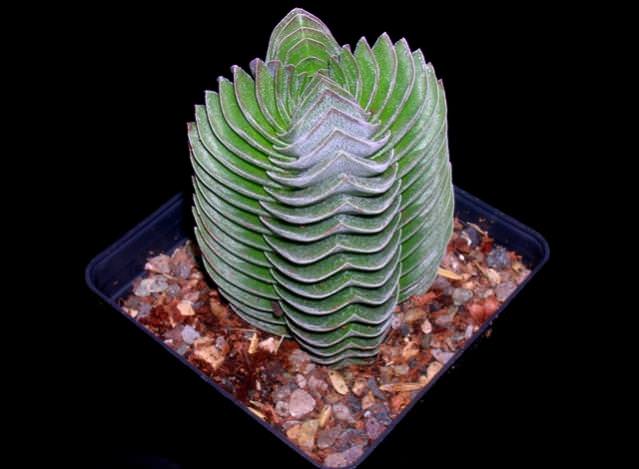

Crassula Spring Time
S. cv. Spring Time is a hybrid form characterized by a compact aerial part and related to highly succulent plants. An adult plant is prone to lodging… The foliage is very juicy, bright green in color. During the flowering process, attractive light lilac flowers are formed.
Crassula Marnier
C. marnieriana is a variety characterized by a straight, slightly branched stem base and oppositely located, sessile type, with a bluish heart-shaped foliage. The flowers are numerous, whitish, located at the top of the plant.

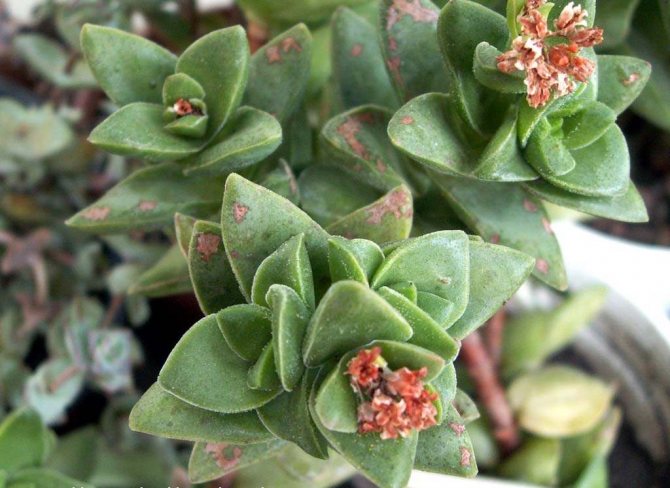
Crassula crescent-shaped
C.fаlсata Wеndl – one of the most spectacular representatives, having rather large, scarlet-red coloration, umbrella-shaped inflorescences that bloom at the top of a fleshy and tall stem. The foliage is very thick, characteristic crescent shape with blunt ends. Flowering occurs every year.
Crassula Hottentot
This variety compares favorably with relatively small leaves that sit densely on relatively numerous stems. The grown shoots hang very effectively over the edges of the flowerpot, therefore, the species is very often grown in a hanging planter.


Crassula pests and diseases
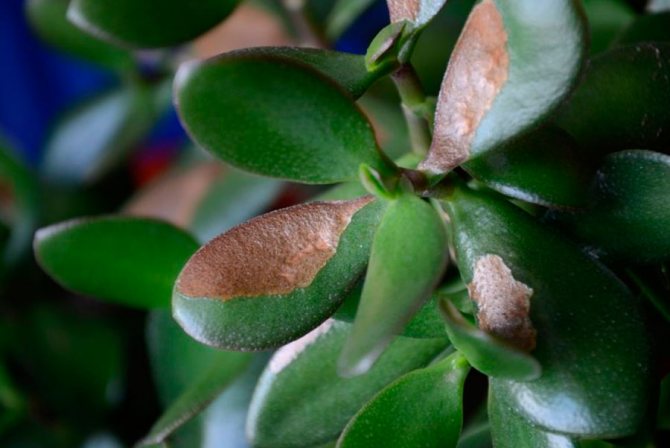
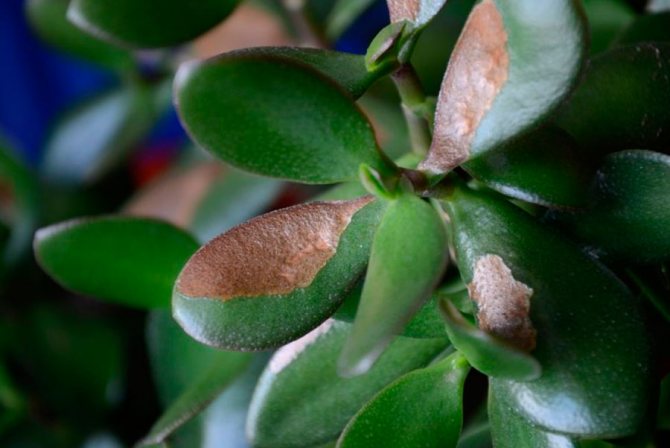
The greatest danger to the crassula is the stagnation of liquid in the substrate, since this may cause rot on the root system and base of the trunk. The fact is that this culture is one of those plants that overdrying an earthen coma can harm less than frequent watering. Drafts are also very harmful to such a flower, if it catches a cold, then it will begin to dry out and fly around the foliage.
Mealybugs can settle on such a plant, in order to remove them from the foliage, use cotton wool, which is moistened with alcohol. In some cases, scale insects settle on it, in order to get rid of them, the bush must be sprayed with actellik. In the event that the bush is not watered for a long time, then spider mites can occupy it, you can find out about this by the thin cobweb that forms on the leaf plates. To combat them, you can use fitoverm or actellic.
The money tree got sick. Diseases and methods of treatment of the Fat Woman!
Crassula care at home
It is not at all difficult to grow many varieties of Fatty Woman at home, and it is this circumstance that largely explains the high popularity of culture among domestic and foreign amateur flower growers.
Lighting, temperature and humidity
All species need sufficient natural light, even during the winter dormancy stage. The stems and foliage of the plant does not need special shading from direct sunlight. South and southeast windows are perfect… Lack of light causes the stems to thin and the foliage to shrink.
The optimal temperature regime for the fat woman in spring and summer is about 20-25 ° C, and in winter – 10-15 ° C. The humidity of the air does not really matter, therefore, the decorative perennial easily tolerates dry, but fresh air. The foliage is periodically wiped with a damp soft cloth, which will maintain an attractive and well-groomed appearance.
How Crassula reproduces (video)
Soil and planting pot for the fat woman
The soil in the flower pot must be special, suitable for growing succulents. The crop has a shallow root system, so the planting pot should not be too tall.
For planting and growing, a nutritious soil substrate based on four parts of sod land, one part of humus land, one part of leaf land and one part of sand with the addition of pieces of coal and brick chips is perfect. There should be enough drainage at the bottom of the flower pot.
Money tree watering rules
Perennials are rarely watered in autumn and winter, and much more often in spring and summer, but after checking the soil moisture in a flower pot at a depth of two fingers. It must be remembered that an excess of moisture often becomes the cause of fungal diseases. Water for irrigation should be well-separated, at room temperature, without high chlorine content.
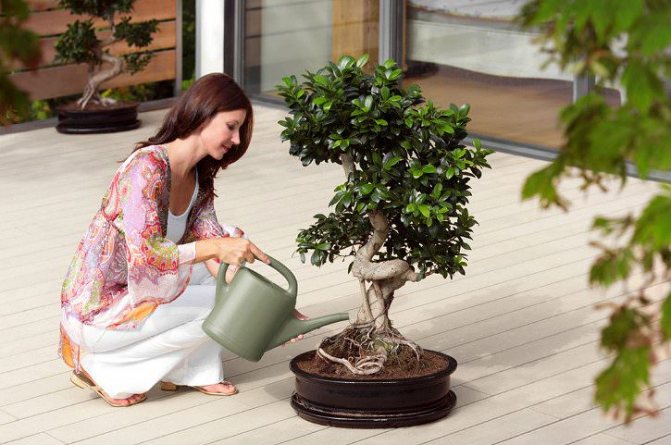

When and how to properly transplant Crassula
In order to properly transplant a fat woman, you need to comply with a number of specific requirements. Young plants are transplanted annually, while adult plants are transplanted about once every two or three years. The transplant should be carried out in the spring, by transferring the root system with an earthen clod into a new flower pot.
During the transplanting process, it is recommended to very carefully examine the root system.… In case of excessive elongation of the roots, they should be trimmed, and the sections of the cut should be sprinkled with crushed coal. After planting, the plant is gently watered with settled water at room temperature. To keep the plant compact, replanting should be done very rarely. Partial replacement of the top layer of soil in a flower pot gives a good result.
Crown formation
If it is necessary to obtain the thickest trunk and dense crown, regular pruning and pinching of the tips of the shoots is performed. Regular pruning with a sharp and clean pruning shears will cause the aboveground part to form properly.
Additional fertilizing
The perennial should be fed with a solution based on a universal fertilizer, or using for this purpose a special fertilizer for cactus and succulents. Top dressing is carried out from April to September, approximately once or twice a month. In the autumn and winter period, feeding is done once a month., fertilizers in half concentration.
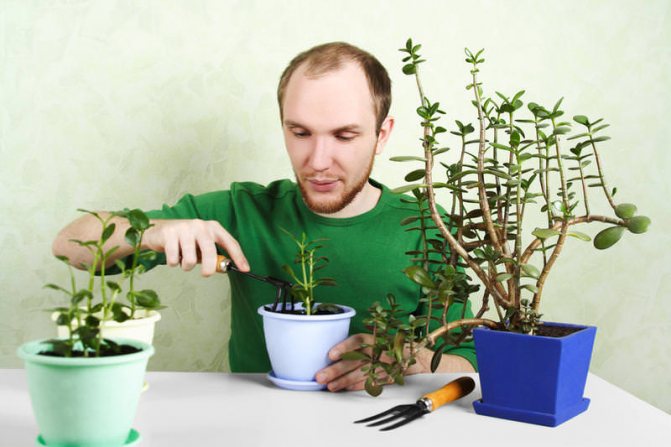

Brief description of cultivation
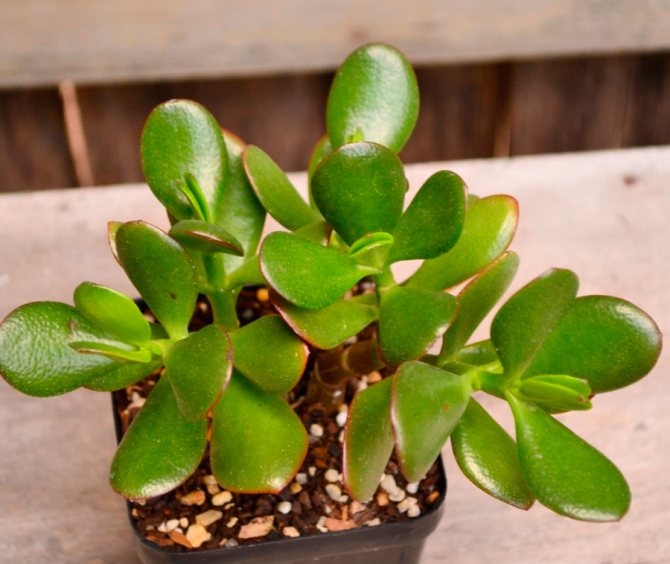
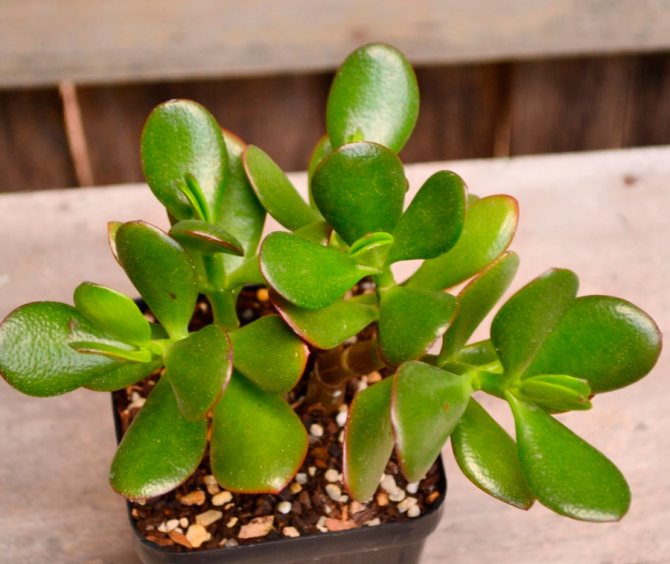
- Flowering… Crassula is grown as an ornamental deciduous plant.
- Illumination… It grows well in bright light of the sun, and also in bright, but diffused light, as well as in shade. For this, windows with an east, south and southwest orientation are suitable.
- Temperature conditions… In the summer – the usual room temperature, and in the winter – from 10 to 15 degrees.
- Watering… Immediately after the surface of the soil mixture in the pot dries out to a depth of 20 to 30 mm.
- Air humidity… Anyone will do.
- Fertilizer… During intensive growth, feeding is carried out once every 1 weeks, for this, a fertilizer solution for succulents and cacti is used. In the autumn-winter period, the plant is not fed.
- The rest period… It is not pronounced. However, it will be better if such a succulent plant rests in winter.
- Transfer… About once every couple of years. The transplant is carried out in the spring at the beginning of the intensive growth of the bush.
- Reproduction… Seed (generative) method and cuttings.
- Harmful insects… Mealy and root bugs, scale insects, spider mites.
- disease… Gray rot, root rot, stem base rot, late blight.
- <font><font>Materials</font></font>… This succulent is capable of releasing substances into the air that have antiviral, antifungal and antibacterial effects. In alternative medicine, its juice is used externally in the same cases as aloe juice, while their effectiveness is also the same. But it should be borne in mind that it is forbidden to take this juice inside, since it contains arsenic.
Crassula (fat woman). Planting and leaving.
Breeding methods of a fat woman
Simplicity of reproduction is one of the advantages of this type of decorative perennial. Most often, an indoor flower is propagated by cuttings, but the seed method is also used. You can cut a plant regardless of the season., but most conveniently in spring or summer. The harvested cuttings are dried for a couple of days, after which they are planted in planting containers filled with a permeable and light soil substrate. Rooting in water with the addition of activated carbon is also allowed.
Seed reproduction involves sowing in seedling containers filled with a mixture based on part of the sand and a couple of parts of leafy soil. The crops should be covered with foil. Before the emergence of mass shoots, crops are regularly sprayed with settled water at room temperature and aired daily. Mass shoots appear in a couple of weeks, after which they dive.
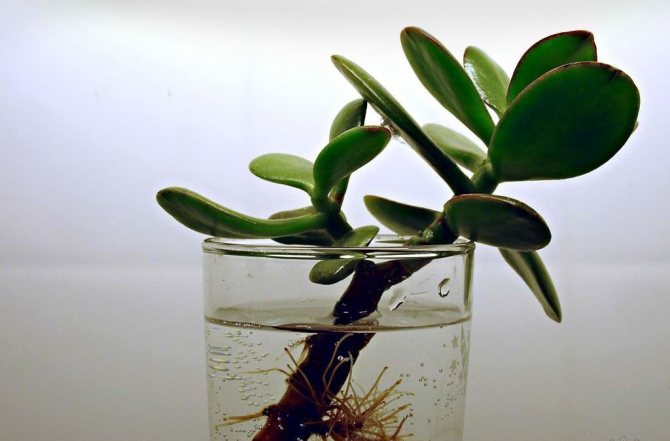
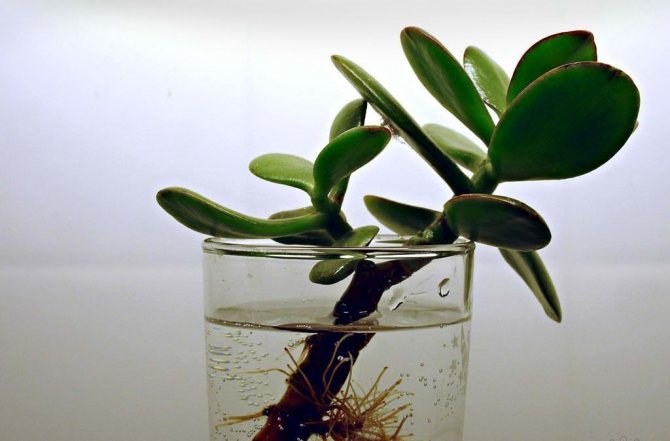
What plants are similar to Сrassula perforata?
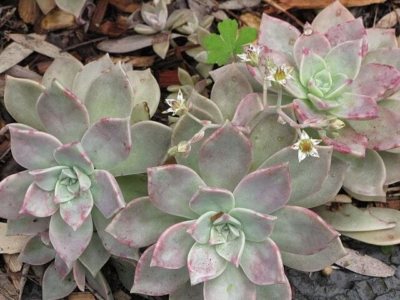

- Graptopetalum paraguayense (Paraguayan Graptopetalum) – like Crassula Perforata, it has diamond-shaped, fleshy and green leaves.
- Aichryson domestic x (Aichrizon home) – similar in leaves, size of formed bushes, as well as a hybrid variety.
- Monanthes muralis (Wall Monantes) – succulent, green leaves, about 3 cm long.
- Monanthes amydros (Amidr Monantes) – racemose inflorescences, evergreen leaves.
- Graptopetalum paraguayense (Graptopetalum paraguayan) – the leaves are covered with gray wax, has a short and juicy stem.
Taking care of a fat woman is not difficult. If you follow all the rules, then this plant will answer you with good growth, beautiful appearance, and will also bring a lot of joy and decorate any interior. We suggest you learn how to grow Crassula types such as Treelike, Portulaca, Sunset, Plauniform, Silver, Temple of Buddha, Ovate, Hobbit and Gollum.
In conclusion, it should be noted that in addition to its unusual appearance, unpretentiousness, longevity and ease of care, Fatty Woman is widely used in medicine as an antimicrobial and antiviral agent.
If you find an error, please select a piece of text and press Ctrl + Enter.
Why do Crassula’s leaves fall
Falling foliage is the most common problem when growing a jellyfish in indoor floriculture conditions. There may be several reasons for this, including improper irrigation measures. Succulents are capable of storing moisture, which makes them undemanding to watering.
Excessive moisture causes foliage to fall off. However, too long breaks in watering are also unacceptable. Stagnant moisture often provokes rotting of the root system. Also, massive foliage fall is noted when the temperature regime in the room is not observed and the plant is damaged by diseases or pests.
Purchase and adaptation
Crassula is a frequent visitor to flower shops.
The price depends on the height of the stems. For a plant with two small shoots, they ask for about 200 rubles.
The Variegat hybrid is more expensive: a well-formed bush with 4-6 stems is estimated at 400-500 rudders.
When buying, pay attention to the condition of the leaves. Healthy specimens have thick flesh, firm surface with a glossy effect and bright colors.
Important! A few yellow leaves on a large specimen do not necessarily indicate some kind of disease – they are periodically renewed. But if there are a lot of them, and the plant itself is sluggish, withered, then there is a high probability of root rot.
Fat women tolerate the adaptation period well. At first, a depressed state may be observed if the temperature regime is very different from the environment in which a particular specimen grew up.
For example, he got out of the greenhouse into a cool room. However, 2-3 weeks will be enough for getting used to it. During this period, it is important not to overdo it with watering.
Reproduction, transplantation, possible difficulties
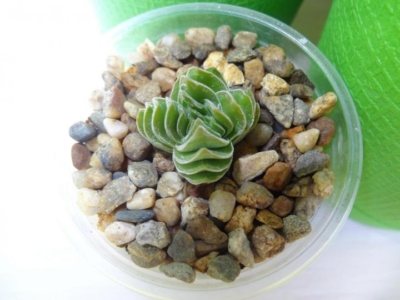

Reproduction takes place with the help of lateral shoots and leaves. Cut off shoots must be dried for several days before planting in the ground. The leaves also need to be dried before planting.
A transplant is necessary no more than once every few years. The pot is chosen a little wider than the old one. Be sure to use drainage. It is important to decontaminate the soil.
Important! After transplanting, the plant pot is placed in a shaded place. Watering can be done after three to four days.
To avoid possible difficulties:
- do not overmoisten the soil so that the roots of the plant do not begin to rot;
- do not overfeed the plant with fertilizers;
- provide adequate lighting;
- do not spray the plant with water.

